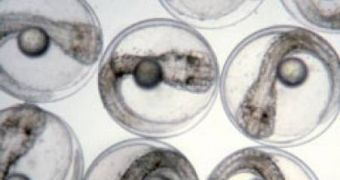Experts at the University of California in San Diego (UCSD) Scripps Institution of Oceanography (SIO) have recently discovered in a new study that high levels of the dangerous greenhouse gas carbon dioxide (CO2), which is largely blamed for global warming, also cause numerous mutations in fish. Among these, they highlight the fact that fundamental body structures in some species were significantly affected, as in the case of ear bones (otoliths), mainly used for acceleration and orientation.
In a scientific paper detailing the finds, published in the June 26th issue of the prestigious journal Science, the Scripps team present some of the conclusions they came to, after subjecting fish to abnormally high concentrations of carbon dioxide in the tanks they lived. They say that mutations and extreme growth appeared in the otoliths, which caused the animals to become confused and unable to survive in their designated environment.
According to the team's previous assumptions, otoliths in young, white seabass should have grown a lot slower if the fish lived in high-CO2 waters. But the new research seemed to tell a different story, expressing the fact that the growth process was actually accelerated. Also, they learned that the fish's body sizes did not increase proportionally to their ear bones.
“At this point one doesn't know what the effects are in terms of anything damaging to the behavior or the survival of the fish with larger otoliths. The assumption is that anything that departs significantly from normality is an abnormality and abnormalities at least have the potential for having deleterious effects,” Scripps Oceanography Professor David Checkley, the lead author of the new study, explains.
“Number three is the big one. If fish can do just fine or better with larger otoliths then there's no great concern. But fish have evolved to have their bodies the way they are. The assumption is that if you tweak them in a certain way it's going to change the dynamics of how the otolith helps the fish stay upright, navigate and survive,” he adds.
The levels of carbon dioxide in the world's oceans are already beyond normal limits, as human activities dump more and more of the chemical in the waters. Carbonic acid is one of the byproducts of the chemical reactions that occur, and it plays a major role in destroying coral reefs around the globe, and in forcing countless other species to relocate to different habitats than those they are accustomed to grow in.

 14 DAY TRIAL //
14 DAY TRIAL //